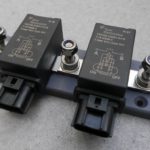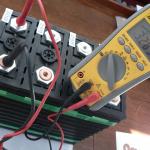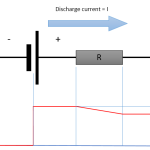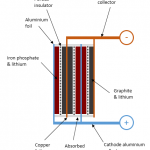This article is part of a series dealing with building best-in-class lithium battery systems from bare cells, primarily for marine use, but a lot of this material finds relevance for low-voltage off-grid systems as well. Lithium iron phosphate (LiFePO4) battery banks are quite different from lead-acid batteries and this is most apparent when it comes to […]
Lithium battery systems
The installation and commissioning of lithium iron phosphate battery systems on board cruising yachts is a subject of great interest for offshore cruising as well as living aboard. Traditional lead-acid battery banks typically exhibit very poor life and performance in this type of service.
The articles published here have been extremely time-consuming to write, due to the volume of research and experimentation involved, but also because of the amount of time required to gain practical experience on board with this technology. It was also necessary to establish a small user base beyond the initial pilot project to obtain feedback and data originating from different energy usage patterns and observe those performing through winter and summer.
The absence of an acceptable and really adequate battery protection/management solution prompted the development of such hardware, which was then followed by extensive testing and validation in the field.
The objective here is providing all the information required for building and commissioning such a lithium house bank, starting from bare lithium battery cells. Completing this task will take a little longer as it is forever competing with other work, but I have now started publishing this material.
Building such systems is the most cost-effective pathway to embrace this new technology, but such installations must be carried out with a great deal of care and attention in order to deliver a good and safe long-term outcome.
Protection and Management of Marine Lithium Battery Banks
This article is part of a series dealing with building best-in-class lithium battery systems from bare cells, primarily for marine use, but a lot of this material finds relevance for low-voltage off-grid systems as well. This article discusses the protection of lithium battery banks in the context of marine installations. A previous article detailed the design […]
Electrical Design For a Marine Lithium Battery Bank
This article is part of a series dealing with building best-in-class lithium battery systems from bare cells, primarily for marine use, but a lot of this material finds relevance for low-voltage off-grid systems as well. Integrating a lithium battery bank on board a vessel introduces a few additional constraints and challenges that don’t exist with lead-acid […]
Assembling a Lithium Iron Phosphate Marine House Bank
This article is part of a series dealing with building best-in-class lithium battery systems from bare cells, primarily for marine use, but a lot of this material finds relevance for low-voltage off-grid systems as well. Here, we detail the hands-on process of building a lithium battery bank from individual single prismatic cells. There is more to […]
Practical Characteristics of Lithium Iron Phosphate Battery Cells
This article is part of a series dealing with building best-in-class lithium battery systems from bare cells, primarily for marine use, but a lot of this material finds relevance for low-voltage off-grid systems as well. Batteries are about voltage, current and capacity first and foremost. This article discusses the performance characteristics of lithium iron phosphate cells […]
Lithium Battery Banks – Fundamentals
This article is part of a series dealing with building best-in-class lithium battery systems from bare cells, primarily for marine use, but a lot of this material finds relevance for low-voltage off-grid systems as well. Hundreds, if not more, of research papers have been published about lithium batteries, as well as numerous books. Still, a lot […]
From Lead-Acid to Lithium: New Battery Technology for Power on Board
This article is part of a series dealing with building best-in-class lithium battery systems from bare cells, primarily for marine use, but a lot of this material finds relevance for low-voltage off-grid systems as well. The development and mass-manufacturing in recent years of large-size lithium-ion battery cells for electric vehicles and grid-tied electricity storage has made […]







